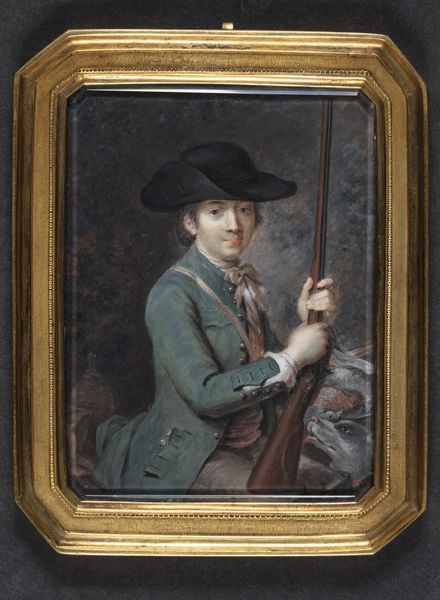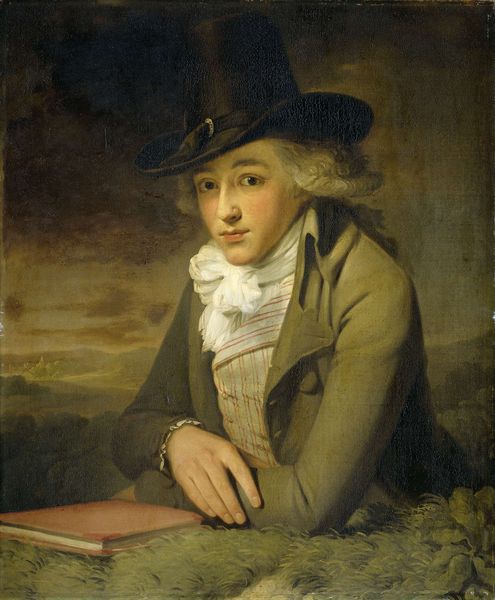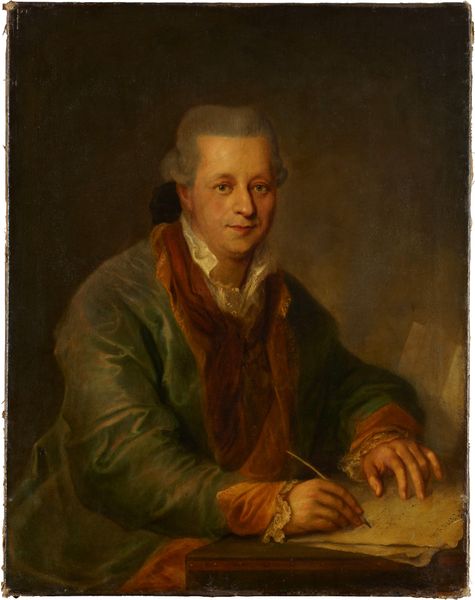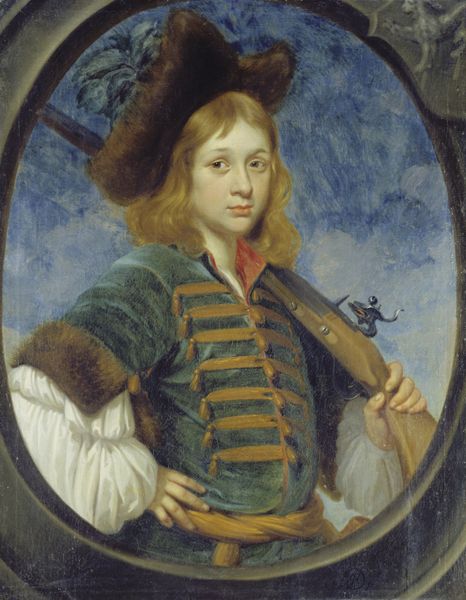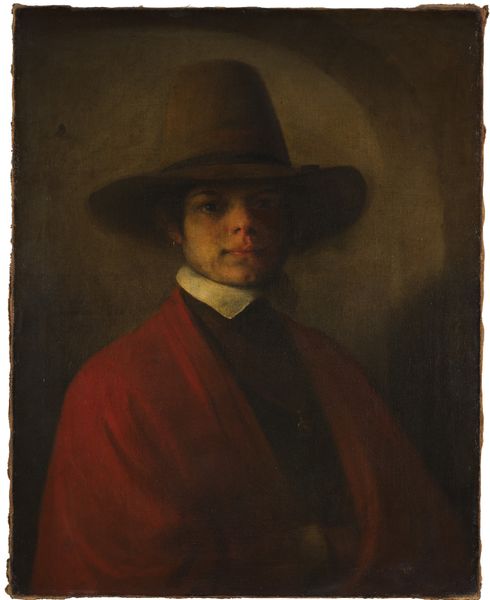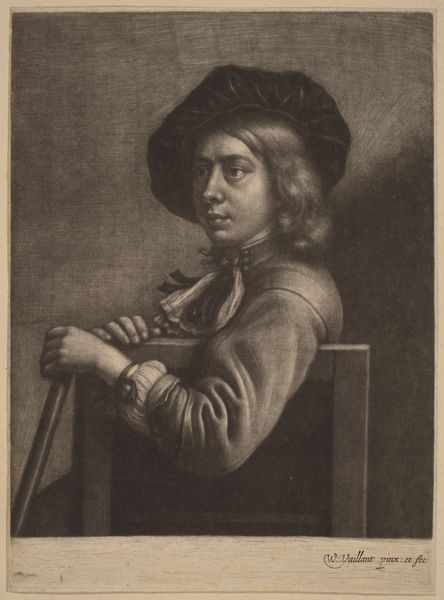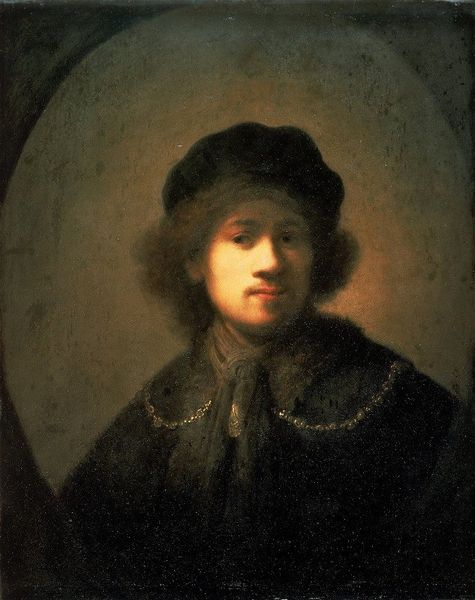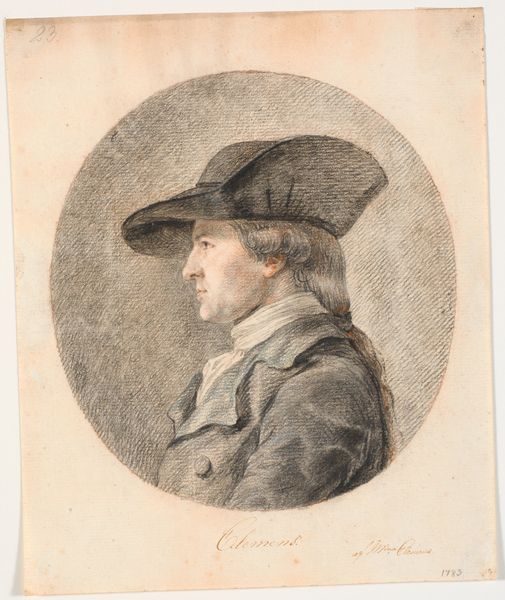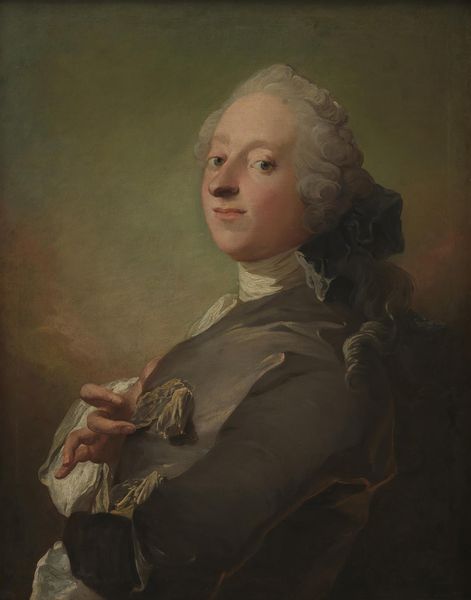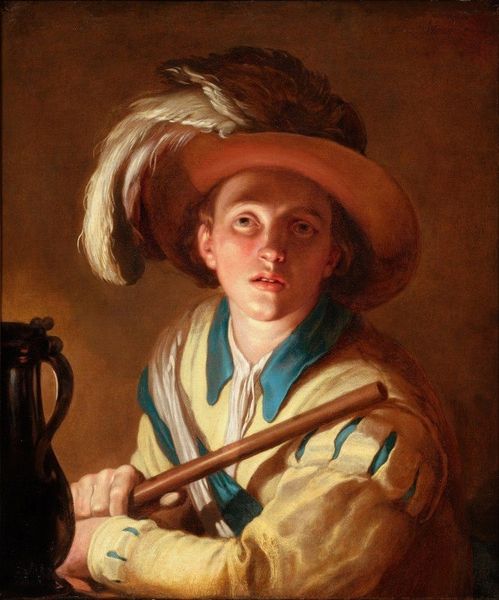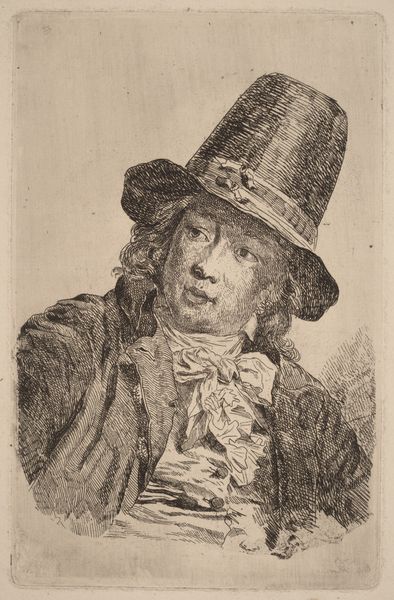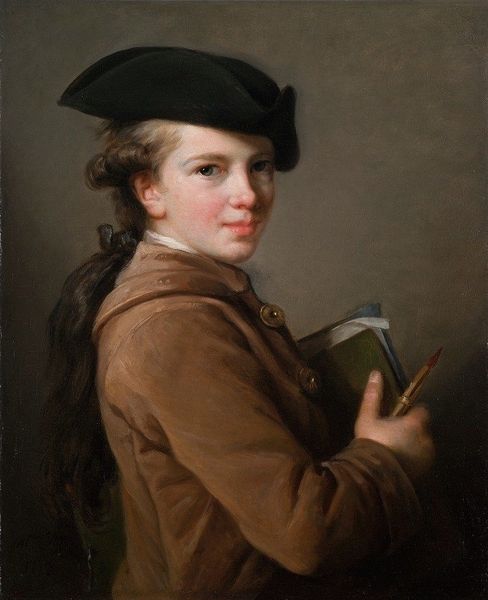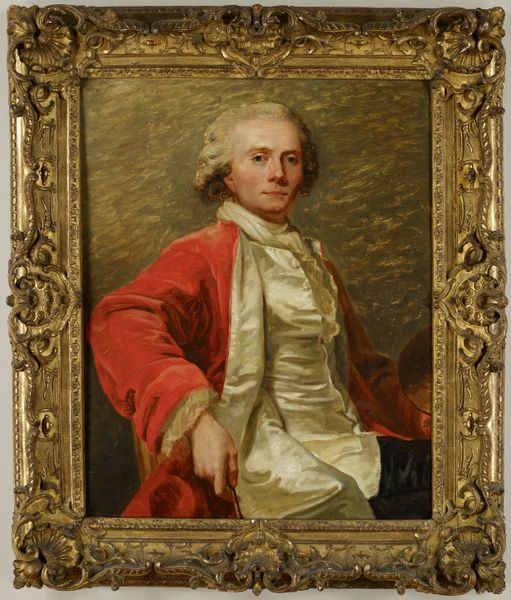
Dimensions: 19 5/8 x 16 5/8 in. (49.8 x 42.2 cm)
Copyright: Public Domain
Curator: First impression? Slightly powdered and ever so melancholy. It has a distinct air of self-awareness about it, wouldn't you say? Editor: Indeed. Looking at this artwork, we have "Portrait of Edouard Gautier-Dagoty" from 1783. Carlo Lasinio rendered this image with a delicate pastel on paper, a medium particularly well-suited to capture the Rococo style. Curator: Rococo and melancholy? Usually it's all cheeky angels and silk, right? Here, though, there's a seriousness that draws me in. The gaze is direct, almost confronting, despite the soft, hazy texture of the pastel. It's like he’s pondering whether the revolution will actually happen in Paris. Editor: Speaking of Paris, it is significant that Edouard Gautier-Dagoty is described at the bottom of this print as the inventor of color engraving. He’s presenting himself, therefore, not just as a man, but as a specific kind of innovator, one who pushed the boundaries of printmaking at a time when those boundaries were being reshaped by political upheaval. And let us not ignore this very self-conscious "artist at work" image in particular: his pose with his tools is really communicating a statement of authorship at this critical time for his art and for himself as an individual! Curator: The tools! I almost missed them amid the powdered wig and the "look-at-me" hat. It adds a vulnerability, a craftsmanly tenderness amidst all the seriousness and powdered sophistication, I am reminded of times when I worked with clay as a young student. Is that how he made a living or just did the printing of other people's artwork. Editor: It really speaks to the art and commerce connection of this period when craft was still something practiced within guilds in major European cities, but yes, also in a society about to embrace industrial forms of printing. Also the French monarchy may very well have regulated, in the sense of limiting access to technologies of making art. That’s the really fascinating intersection. He's an inventor showing you the tools that make this portrait, like the picture contains all the means for how to make more pictures! Curator: What an insight! Editor: Yes. In conclusion, the picture can stand as an individual expression but must always stand as a broader comment on a turbulent time. Curator: Definitely! Thanks. And thank you listeners!
Comments
No comments
Be the first to comment and join the conversation on the ultimate creative platform.
